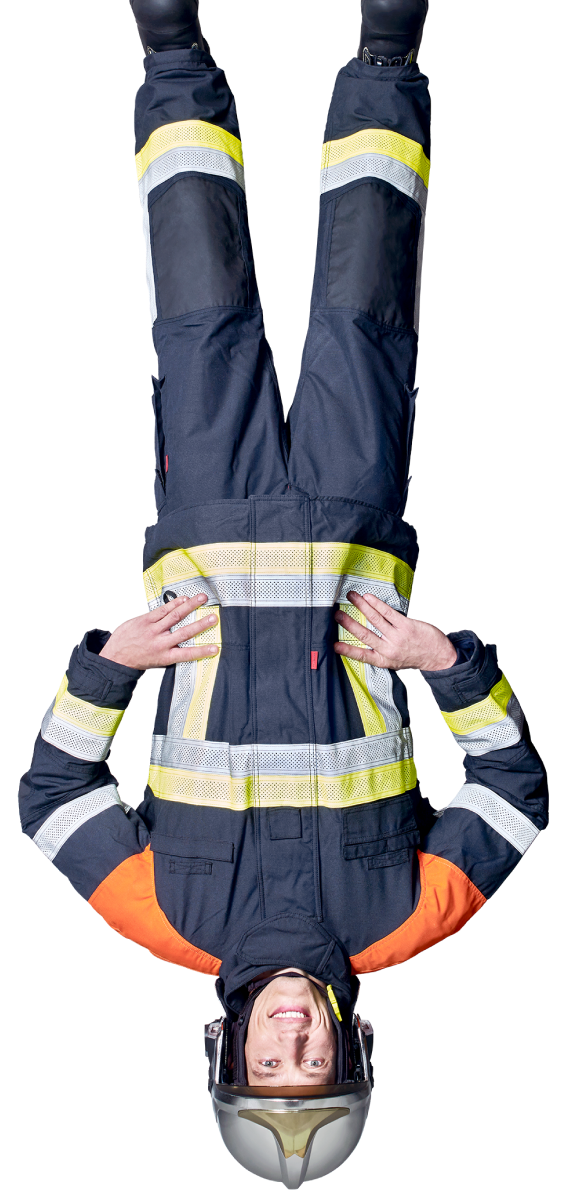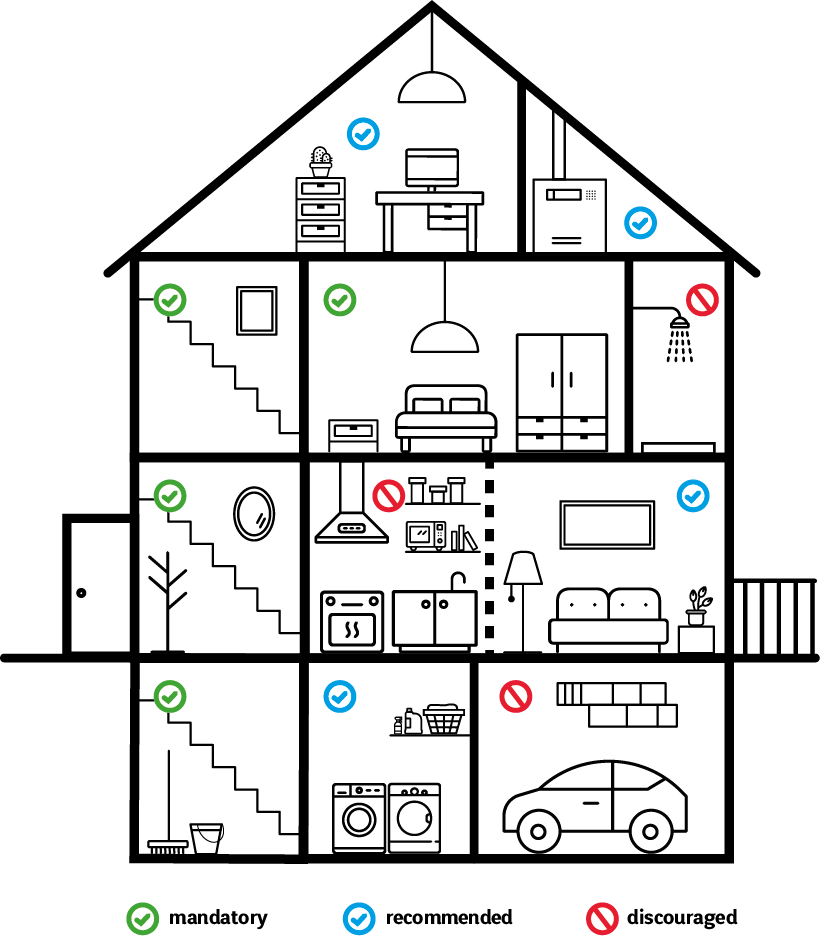It’s difficult to attach a firefighter to the ceiling…
But it’s easy to install a smoke detector
Mandatory since January 2023 in all homes

Why are smoke detectors important?
In the event of smoke, it quickly triggers an audible alarm and saves you valuable time leaving the building and calling the fire brigade on the emergency number 112, especially at night.


How is it installed?
Smoke detectors are usually supplied with a screw-fastening base. After marking the positions for the fixing holes (preferably on the ceiling), the holes are drilled and then the base is attached using screws suitable for your ceiling.
The smoke detector is then attached to the base by turning it clockwise to lock the two parts together. Finally, the smoke detector should be tested by pressing the test button. The indicator light, which shows the operating status of the device, should flash. This means that it is working properly.
Where should it be installed?
The smoke detector must be installed on escape routes and in bedrooms. Installation in other rooms is recommended.
According to the law, all escape routes and bedrooms must be equipped with one or more smoke detectors.
In addition to the mandatory rooms, it is strongly recommended that smoke detectors are installed in laundry rooms, offices, boiler rooms and living rooms.
However, it is not advisable to install a smoke detector in the garage, or in damp rooms such as the kitchen or bathroom. Water vapour or cooking fumes can cause the device to go off unintentionally.

How should it be installed?
On the ceiling (or in exceptional cases on the upper part of a vertical wall), and far away from lights and ventilation/air conditioning systems.

F.A.Q.
Smoke detector
A smoke detector must carry the “CE” mark, which means that it complies with European requirements and standards.
You can usually buy a smoke detector in hardware stores, certain supermarkets or specialist stores.
A smoke detector usually costs between 10 € and 20 €.
You should test your smoke detector regularly, preferably at least once a month, and especially if you have been away from home for a longer period.
No. To alert the emergency services, you must call the emergency number 112.
Leave your home immediately, go outside and call the emergency number 112.
If the detector is battery-operated, remove them.
The operating instructions supplied with your smoke detector explain how to test its functionality. Smoke detectors generally have a button on the outside that you need to press for a few seconds to check whether the alarm is working.
In some homes, smoke detectors are connected to the alarm system and therefore to the electricity supply, but in general they are battery-operated.
An autonomous smoke detector detects smoke, including various vapours, whereas a CO detector only detects vapours of carbon monoxide, an odourless and colourless gas.
The first campaign in which smoke detectors were distributed free of charge to households has now ended.
Installation
It is mandatory to equip escape routes and each bedroom with one or more smoke detectors.
In this case, it is recommended that the smoke detector is installed at a distance of 6 metres from any electrical appliances (stovetop, etc.).
If in doubt and to ensure correct installation, you should read the operating instructions for your smoke detector.
Yes, the smoke detector should not be installed near ventilation and air-conditioning systems. All specifications and installation rules can be found in the instructions supplied with the smoke detector.
A smoke detector is triggered by the volume and thickness of smoke emitted. In principle, it is not triggered by cigarette smoke if you ventilate the room at the same time. However, you should avoid smoking directly under a smoke detector.
The installation and regular inspection of a smoke detector do not necessarily have to be carried out by a qualified professional, but they can be. Please always refer to the smoke detector’s operating instructions and the user manual supplied with it.
In communal areas of buildings that are subject to co-ownership legislation, the community of owners is responsible for the installation.
In communal areas of buildings that are not subject to co-ownership legislation, the owner is responsible for the installation.
Communal areas of a building include passageways (escape routes), laundry rooms, technical premises, etc.
The property owner is responsible for installing the smoke detector(s) and the tenant is responsible for their maintenance.
Legislation
On 1st January 2023, the 3-year transitional period set out in Article 9 of the law of 6 December 2019 on the mandatory installation of autonomous smoke detectors in buildings with at least one dwelling ended. Dwellings that already existed before the law came into force must comply with the law since then.
All buildings with at least one dwelling are affected.
The law does not provide for any penalties as it aims to raise public awareness of the importance and significance of smoke detectors, which can save lives.
No, this is not necessary.
No, the law explicitly excludes this. The fact that you do not have smoke detectors in your home does not constitute an exclusion clause for insurance companies to refuse to cover the claim.
Can’t find the information you are looking for?
Please contact us
An initiative of

